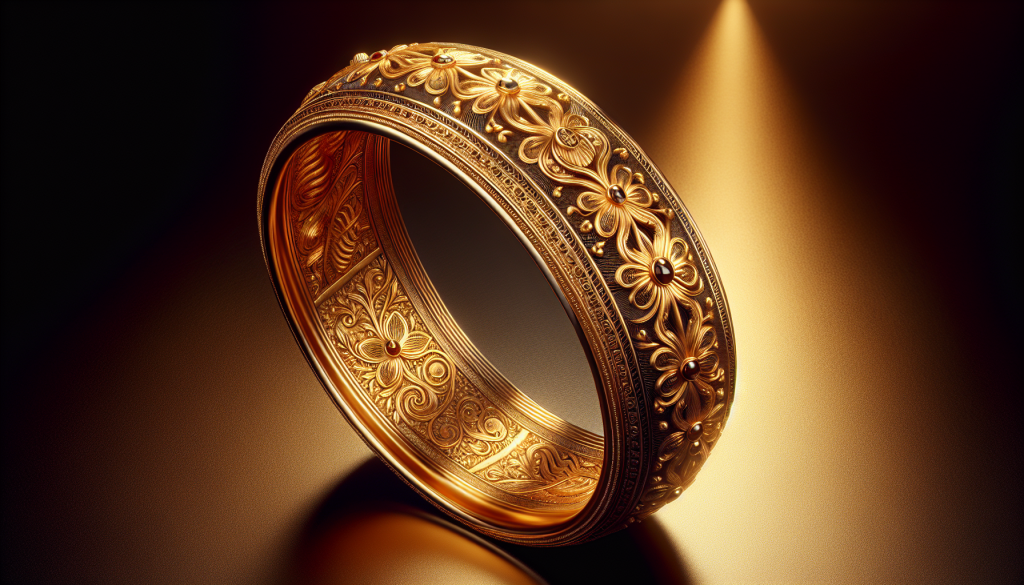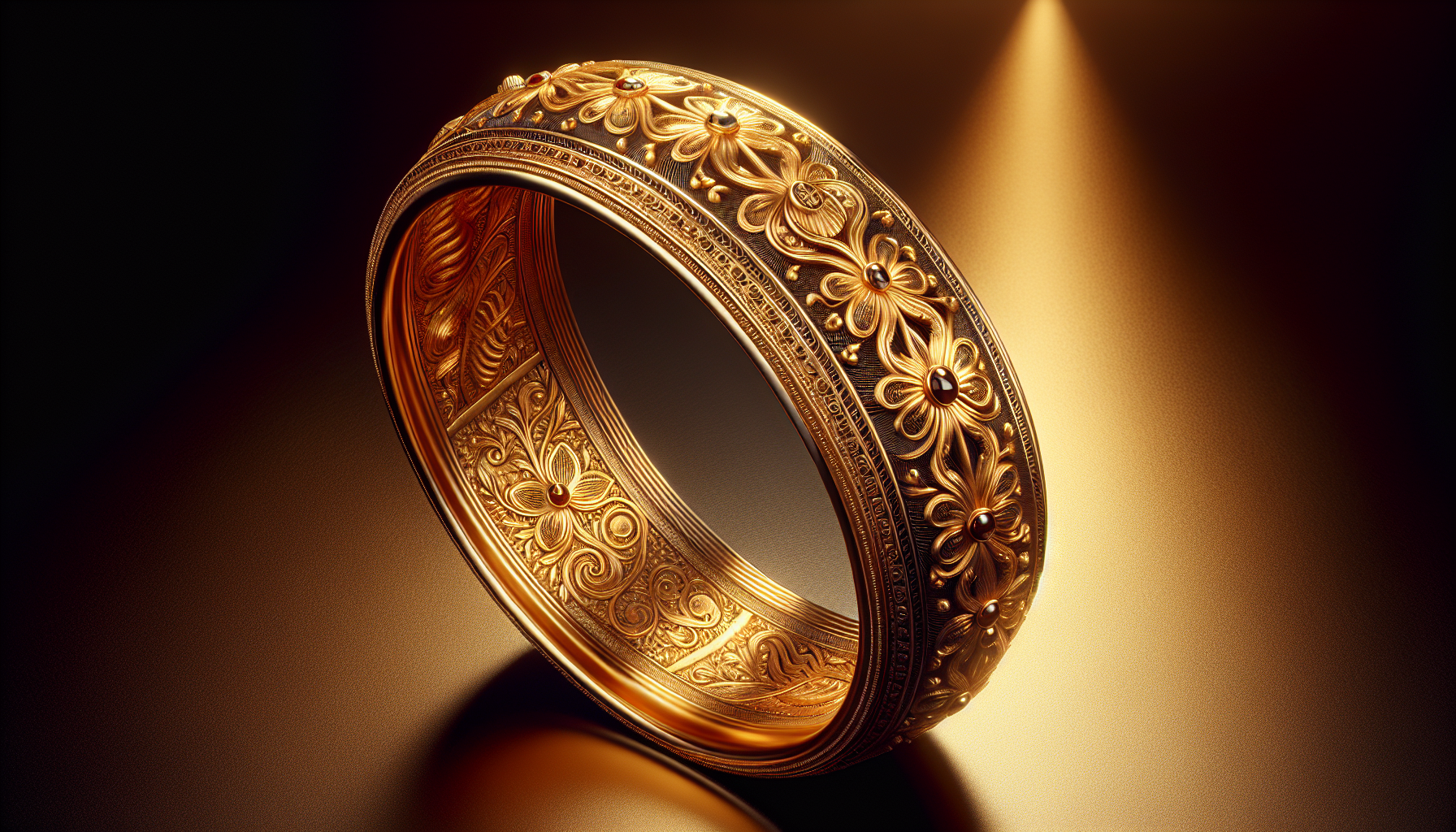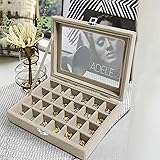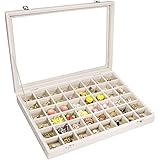Did you ever wonder how much gold is actually used in the making of a single bangle? It’s a fascinating question that sparks curiosity about the value and craftsmanship behind these ornate pieces of jewelry. Join us on a journey as we explore the intricate art of bangle making and uncover the surprising answer to this golden mystery.
Jewelry Dish Tray, Ring Dish, Ceramic Trinket Tray, Key Bowl, Decorative Plate, for Friends Sisters Daughter Mother (Milky White)
$5.58 (as of January 14, 2026 14:37 GMT +00:00 - More infoProduct prices and availability are accurate as of the date/time indicated and are subject to change. Any price and availability information displayed on [relevant Amazon Site(s), as applicable] at the time of purchase will apply to the purchase of this product.)KElofoN Travel jewelry case Travel jewelry box Travel Jewelry Organizer Small box Gift for Girls Women with Mirror(Pink)
$6.98 (as of January 14, 2026 14:37 GMT +00:00 - More infoProduct prices and availability are accurate as of the date/time indicated and are subject to change. Any price and availability information displayed on [relevant Amazon Site(s), as applicable] at the time of purchase will apply to the purchase of this product.)Velvet Jewelry Box, 24 Grid Earrings Jewelry Ring Display Organiser Box for Girls Wife Mom Women,Bee white
Now retrieving the price.
(as of January 14, 2026 14:37 GMT +00:00 - More infoProduct prices and availability are accurate as of the date/time indicated and are subject to change. Any price and availability information displayed on [relevant Amazon Site(s), as applicable] at the time of purchase will apply to the purchase of this product.)Vicoter Velvet Jewelry Tray 48 Compartments Jewelry Display Organizer with Transparent Cover Rings, Earrings, Necklaces, Pendants Storage Box for Girls, Wives, Mothers, Women
$17.99 (as of January 14, 2026 14:37 GMT +00:00 - More infoProduct prices and availability are accurate as of the date/time indicated and are subject to change. Any price and availability information displayed on [relevant Amazon Site(s), as applicable] at the time of purchase will apply to the purchase of this product.)17Dec 360 Rotating Earring Holder Organizer Stand,5 Tiers Acrylic Jewelry Organizers and Storage,Stud Earring Organizers and Storage,212 Holes and 212 Grooves for Earrings Necklaces chain bracelet
$8.99 (as of January 14, 2026 14:37 GMT +00:00 - More infoProduct prices and availability are accurate as of the date/time indicated and are subject to change. Any price and availability information displayed on [relevant Amazon Site(s), as applicable] at the time of purchase will apply to the purchase of this product.)
Understanding the Composition of a Bangle
Types of Bangles
Bangles are a popular form of jewelry worn by women around the world. They come in various types, each with its own unique characteristics. Some common types of bangles include solid bangles, flexible bangles, cuff bangles, and charm bangles. Solid bangles are rigid and made from one solid piece of material, while flexible bangles are bendable and usually have a hinge or clasp. Cuff bangles are open-ended and can be easily slipped onto the wrist, while charm bangles feature small charms or pendants attached to them.
Traditional Bangles vs. Modern Bangles
Traditional bangles have been a part of many cultures for centuries, and their designs often reflect the rich heritage of a particular region or community. These bangles may be adorned with intricate engravings or embellishments that showcase the craftsmanship of the artisans. Modern bangles, on the other hand, cater to contemporary tastes and often feature minimalist designs or trendy patterns. They may also incorporate unconventional materials or incorporate gemstones for added glamour.
Materials Used in Bangle Making
Bangles can be made from a variety of materials, with gold being one of the most popular choices. Gold bangles exude elegance and luxury, making them a favored choice for special occasions or as heirloom pieces. Other materials commonly used in bangle making include silver, platinum, stainless steel, brass, and even plastic or acrylic in costume jewelry. The choice of material depends on factors such as style preferences, budget, and desired durability.
Gold Content in Bangles
Different Carats of Gold
The gold content in a bangle is measured in carats, which indicates the purity of the gold used. Pure gold is 24 carats, but it is very soft and not very practical for making jewelry. Therefore, gold bangles are usually made from alloys that combine gold with other metals. The most common caratages used in jewelry are 22K, 18K, and 14K. 22K gold contains 91.7% pure gold, 18K gold contains 75% pure gold, and 14K gold contains 58.3% pure gold. The choice of caratage depends on factors such as the desired level of gold purity and the strength and durability required for the bangle.
Factors Affecting Gold Content
Several factors can affect the gold content in a bangle. Firstly, the design and size of the bangle play a crucial role. Larger and more intricate designs require more gold, resulting in higher gold content. The weight and thickness of the bangle also contribute to the gold content, as a thicker bangle will naturally contain more gold. Additionally, any gemstones or embellishments added to the bangle will increase the overall gold content, as more gold is required to accommodate these additions.

Determining the Weight of Gold in a Bangle
Calculating Gold Weight
Calculating the weight of gold in a bangle is essential to understand its value and ensure accurate pricing. The weight is usually measured in grams or ounces. To determine the gold weight, the bangle is weighed using a digital scale or through the water displacement method, which involves measuring the water that is displaced by the bangle when submerged. The weight is then multiplied by the gold content percentage to find the actual weight of the gold in the bangle.
Using a Digital Scale
A digital scale is a commonly used tool to measure the weight of a bangle accurately. It provides precise readings and allows for easy conversion between units of measurement. To weigh a bangle using a digital scale, it is simply placed on the scale, and the weight is displayed on the screen. This method is quick, efficient, and widely accepted in the jewelry industry.
Weighing the Bangle with Water Displacement Method
The water displacement method is another reliable way to determine the weight of a bangle. This method requires a container filled with water and a measuring cylinder. The container is filled with water up to a certain level, and the initial water level is noted. The bangle is then carefully submerged into the water, making sure that no air bubbles remain trapped. The water level will rise due to the displacement caused by the bangle. The change in water level is measured using the measuring cylinder, and this value represents the volume of the bangle. Since the density of gold is known, the volume can be multiplied by the density to calculate the weight of the gold in the bangle.
Standard Measurements of Bangles
Understanding Bangle Sizes
Bangles come in various sizes to fit different wrist sizes. The size of a bangle refers to its inner circumference or diameter. Commonly used measurement systems for bangle sizes include the Indian standard, British standard, and American standard. The Indian standard uses a numerical scale ranging from 2 to 12, with 2 being the smallest size and 12 being the largest. The British standard uses an alphabetical scale, with sizes ranging from A to Z, while the American standard uses a numerical scale starting from 1 to 14. It is crucial to know your wrist size or consult a jeweler to determine the appropriate bangle size for a comfortable fit.
Variations in Sizes
Bangle sizes can vary not only based on different measurement systems but also due to cultural preferences and individual design choices. Some bangles are designed to be loose and slide up and down the arm, while others are meant to fit snugly on the wrist. It is important to consider factors such as personal comfort, desired wearing style, and the material used while selecting the right size of bangle. For example, a solid gold bangle may need to be slightly larger to accommodate the width of the wrist compared to a flexible bangle that gives more leeway.
International Size Conversions
If you are purchasing bangles internationally or from different regions, it is important to understand the conversion between different size scales. While there may not be an exact correlation between the different systems, there are general guidelines available to assist in determining the appropriate size. Jewelry stores and online resources often provide conversion charts or calculators to help customers find the right bangle size, taking into account the variations among the measurement systems.

Design and Pattern Influence
Intricate Patterns vs. Simple Designs
The design and pattern of a bangle have a significant impact on its overall appearance and gold content. Intricate patterns and designs require skilled craftsmanship and meticulous detailing, resulting in a higher gold content due to the additional labor and material involved. These bangles often feature elaborate engravings, filigree work, or intricate motifs that make them stand out. In contrast, simple designs may have minimalist patterns or clean lines, requiring less gold and making them more suitable for everyday wear. The choice between intricate patterns and simple designs ultimately comes down to personal style and the desired aesthetic.
Design Elements Impact on Gold Content
When it comes to bangles, the design elements incorporated can affect the gold content in various ways. Heavier and thicker bangles with intricate patterns and embossing will naturally require more gold. The surface area covered by the design also influences the gold content, as larger designs will necessitate additional gold. Additionally, the addition of gemstones, pearls, or other embellishments can increase the gold content of the bangle. Therefore, it is important to consider the design elements and their impact on the overall gold content when selecting or creating a bangle.
Consideration for Stone-Studded Bangles
Additional Gold Required for Stones
Stone-studded bangles are a popular choice for those who desire a touch of sparkle and color in their jewelry. When incorporating gemstones into a bangle, it is necessary to account for the additional gold required to hold the stones securely in place. Gemstones are typically set using prongs, bezel settings, or pavé settings, and each method requires a certain amount of gold to ensure the stone is securely mounted. The size and number of gemstones will determine the amount of gold needed for the setting.
Factors Affecting Stone Requirements
Several factors influence the requirements for stones in a bangle. The size and cut of the gemstones play a crucial role, as larger stones will require more gold to hold them securely. The type of setting used also affects the stone requirements, as settings like pavé or channel settings can accommodate multiple smaller stones, while bezel settings may be used for a single larger stone. The design of the bangle and the desired overall appearance also influence the number and size of gemstones used. It is important to consider these factors when designing or purchasing a stone-studded bangle to ensure the right balance between gold and gemstones.
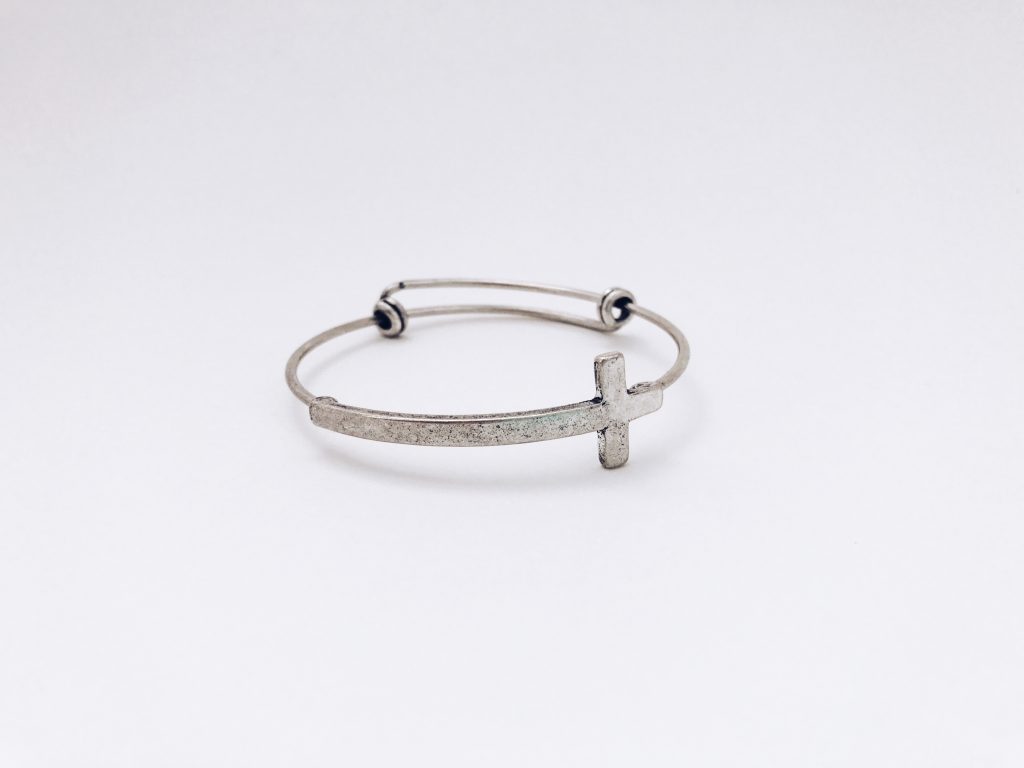
Calculating the Weight of Gemstones
Determining Carat Weight
Gemstones, such as diamonds or colored gemstones, have their weight measured in carats. One carat is equal to 0.2 grams or 200 milligrams. The carat weight of a stone is determined by its size and sometimes its specific gravity. Gemstones are typically sold by their carat weight, and the price increases with the carat weight due to their rarity and desirability.
Using a Gemstone Scale
A gemstone scale is a specialized tool used to measure the weight of gemstones accurately. The scale is calibrated to provide precise readings in carats, allowing jewelers and gemologists to determine the carat weight of a stone. To weigh a gemstone, it is placed on the scale, and the weight is displayed on the screen. Jewelers can use this information to calculate the additional gold required to hold the stone in place on a bangle or any other piece of jewelry.
Lacquer-Filled Bangles
Impact of Lacquer on Gold Weight
Lacquer-filled bangles are a unique type of bangle that feature a hollow core filled with lacquer or resin. The lacquer serves as a decorative element and often adds a pop of color to the bangle. However, it is essential to note that the lacquer does not contribute to the weight or gold content of the bangle. The gold weight is calculated based on the solid components of the bangle, excluding the space occupied by the lacquer. Therefore, lacquer-filled bangles may appear larger or more substantial than their actual gold weight suggests.
Advantages and Disadvantages
Lacquer-filled bangles offer a distinct aesthetic appeal and can be a more cost-effective option compared to solid gold bangles. They provide the appearance of a larger bangle while using less gold. Additionally, the lacquer allows for a broader range of colors and design possibilities, making them versatile and adaptable to different styles. However, it is worth noting that lacquer-filled bangles may be more susceptible to damage or wear over time compared to solid gold bangles. The lacquer may chip or wear off, potentially affecting the overall appearance of the bangle. It is important to handle lacquer-filled bangles with care and avoid exposing them to harsh chemicals or extreme conditions.

Hallmark Certifications
Importance of Hallmark
Hallmark certifications play a crucial role in authenticating the purity and quality of gold bangles. A hallmark is a mark or stamp that is applied to gold jewelry to signify its authenticity and compliance with specific quality standards. These certifications are issued by authorized agencies or governmental bodies that have the necessary expertise and equipment to evaluate the precious metal content accurately. Hallmarks provide assurance to consumers that they are purchasing genuine gold and can be used as an indicator of the bangle’s value.
Authenticating Gold Purity
Hallmark certifications indicate the purity of the gold used in a bangle. They usually include information regarding the caratage, gold content, and the manufacturer’s or assayer’s mark. The presence of a hallmark confirms that the bangle has undergone rigorous testing for purity and meets the required standards. Buyers should look for hallmarks when purchasing gold bangles and ensure that they are purchasing from reputable jewelers or retailers who provide certified jewelry.
Determining the Value of a Bangle
Gold Market Price
The value of a gold bangle is closely tied to the current market price of gold. The price of gold is influenced by factors such as supply and demand, economic conditions, and geopolitical events. Gold prices fluctuate daily and are quoted per troy ounce. Buyers and sellers can monitor the market price of gold through financial news sources or online platforms dedicated to tracking precious metal prices.
Calculating Gold Value
Calculating the value of a gold bangle involves determining the weight of the gold and multiplying it by the current market price per troy ounce. The purity of the gold, measured in carats, is also taken into account. Once the weight and purity are known, the value can be calculated by multiplying the weight by the gold content percentage and the current market price. Additional costs, such as labor or design charges, may also be factored in when determining the final value of the bangle.
Additional Costs
In addition to the gold content, other factors can affect the value of a bangle. Any gemstones or embellishments incorporated into the design will contribute to the overall value. The labor and craftsmanship involved in creating the bangle may also be reflected in its price. Unique or custom designs may command higher prices due to their exclusivity and additional work required. Additionally, certain brands or designers may have a reputation that adds value to their creations. It is important to consider these factors when assessing the value of a bangle and making a purchase decision.
In closing, understanding the composition, gold content, weight, size, design, stone requirements, and value of a bangle is crucial to making informed decisions when purchasing or valuing this popular piece of jewelry. Factors such as the type of bangle, materials used, gold content, design elements, gemstones, bangle size, and hallmark certifications all contribute to the uniqueness and value of each bangle. Whether you are looking for a traditional or modern bangle, a simple or intricate design, or a stone-studded or lacquer-filled bangle, a comprehensive understanding of these aspects will guide you in finding the perfect bangle that suits your personal style and preferences.
